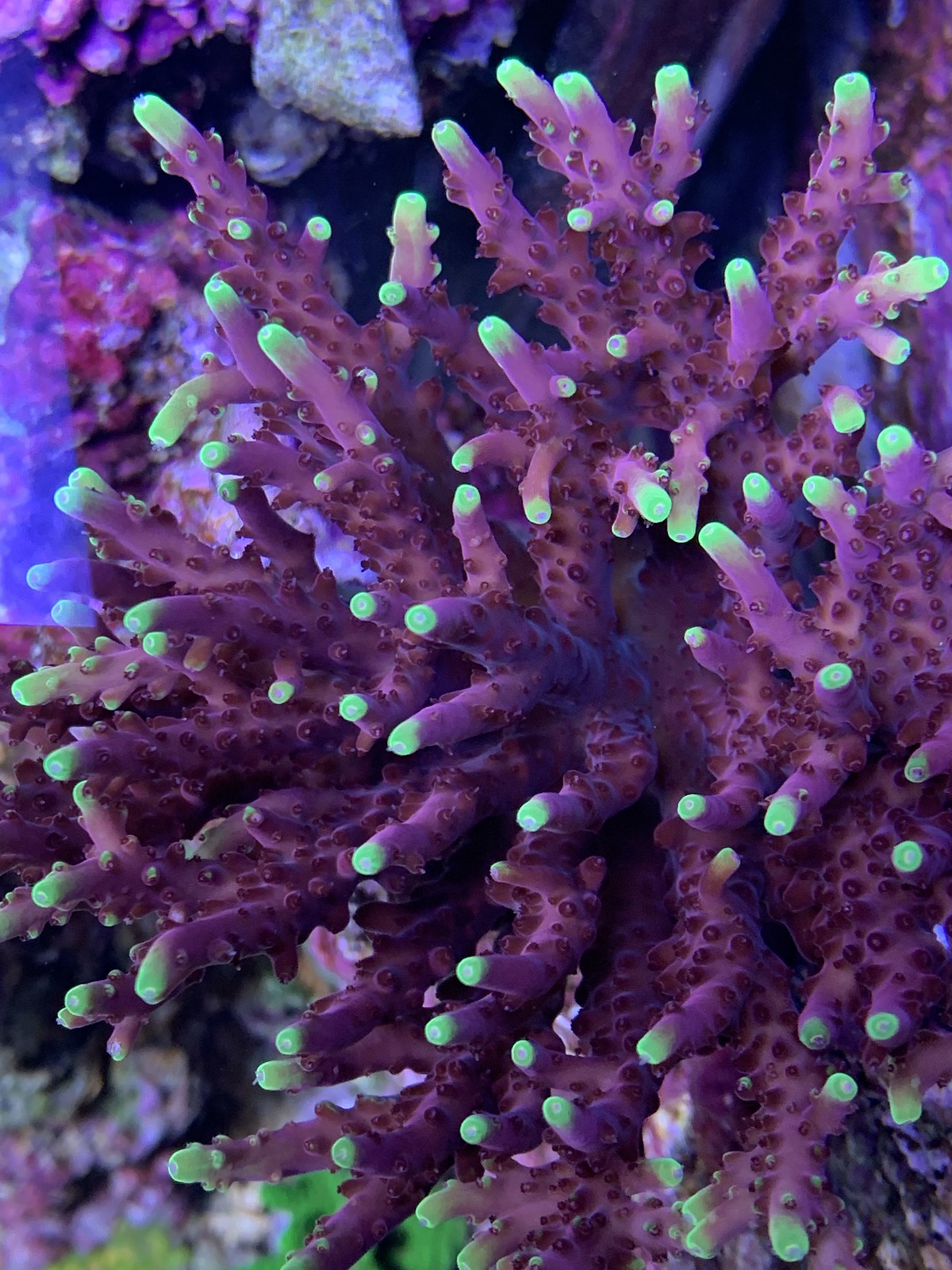I have had to go fallow twice and my corals have been starved despite my best efforts and completely paled out. I've now reintroduced a handful of fish in my 130 gallon. I've just started to get an NO3 reading but no PO4 with Salifert test kits. I use a 4 bulb t5 ATI Powermodule which also has 4 banks of 75 watt LED clusters. I run the T5 at full power 11 hours a day and the LEDs for about 13 hours including an hour ramp up and down.
I am starting to notice some colour coming back. However, I have notice on the top tier of my rockwork that on some SPS, the shaded areas are starting to colour up, but the areas that face the light directly are still very pale and have been for some time.
This got me to wondering whether extremely low NO3 and PO4 can cause SPS to pale and even bleach in high light environments. Has this been the experience of other SPS keepers?
Also, should I move these corals to lower light areas or just wait until I bring up my inorganic nutrients to a respectable level?
I am starting to notice some colour coming back. However, I have notice on the top tier of my rockwork that on some SPS, the shaded areas are starting to colour up, but the areas that face the light directly are still very pale and have been for some time.
This got me to wondering whether extremely low NO3 and PO4 can cause SPS to pale and even bleach in high light environments. Has this been the experience of other SPS keepers?
Also, should I move these corals to lower light areas or just wait until I bring up my inorganic nutrients to a respectable level?



















